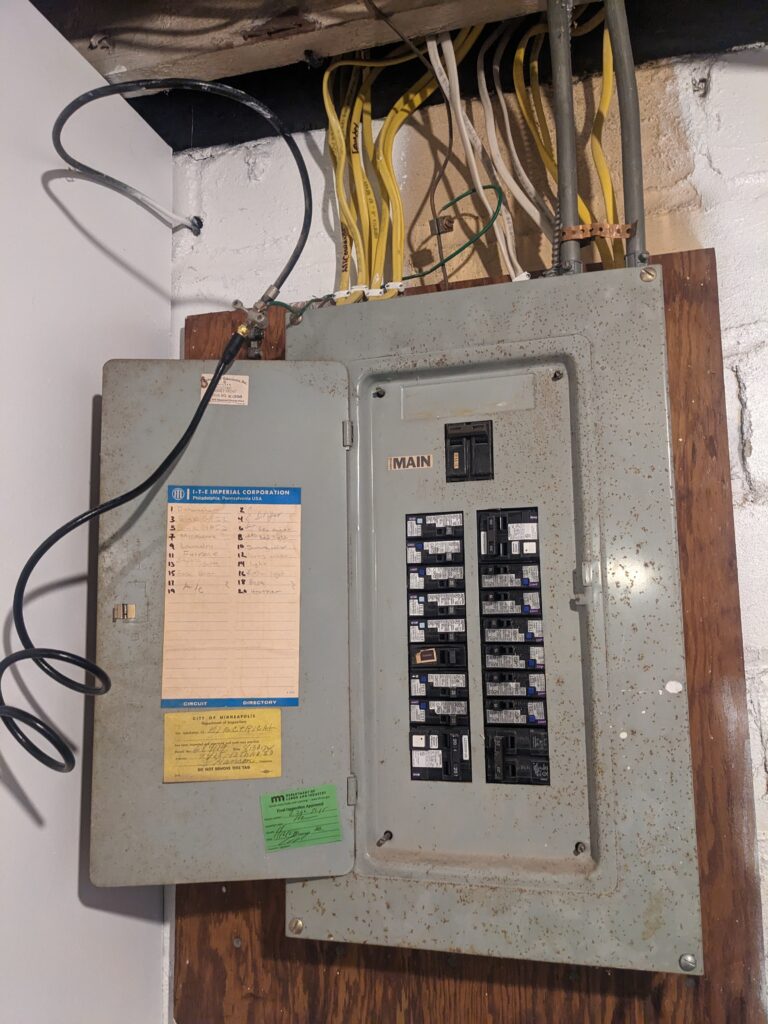BEEP
The uninterruptible power supply has kicked in again. Which means that we have tripped a breaker again in the new house. Probably we did something unwise like “leaving a closet light on” or “attempting to run a gaming computer”, but sometimes it seems to happen for no reason at all. Multiple times a day.
We have had the electricians out, and they shook their heads sadly and quoted us 6 months’ mortgage payments to do about half the remediation that would help.
See, when arc-fault circuit interrupters became the required standard in the US in 2015, it meant that any certified electrician who did work on a panel needed to update from the older to the newer style of circuit breakers. That’s how new standards get implemented. The downside is that although this house is not knob-and-tube, the wiring and circuits are not really ready to have that level of scrutiny applied to them. Shared neutral ground used to be a standard wiring practice (it’s even sometimes called an “Edison Circuit”), but it makes the arc-fault circuits sad, because their math does not add up correctly. So even though it is not particularly a fire hazard, it’s more hazardous than the new circuit breakers are prepared to deal with.
If you have not dealt with your power cutting out multiple times a day, you do not know how motivated we were to fix this.
BEEP
The right way to fix it is to spend a lot of money to:
– replace the board
– ground all the circuits individually
– provide the kind of environment that the AFCI was designed for
The DIY way to fix it is to buy some older-style circuit breakers and install them ourselves. Certified electricians can’t yolo this into production, but homeowners can! And that kicks the can down the road for either the next owners or our future selves.
It’s easy, at this point, to be frustrated about the building codes that required circuits that our wiring just cannot even deal with. It’s not very inclusive to force people to live with intermittent electricity, or to spend a ton of money to rewire a house that is working.
Regulations almost always feel like this – a stupid, pointless imposition that ruins something that was already working fine. They add costs, both monetary and friction. But in retrospect, we can see the effects. People escape from high-rise fires in buildings with sprinklers. Very few drivers are decapitated by plate glass now that windshields are made of safety glass. Good, enforced building codes save lives every day, and it’s not news. Good, maintained public infrastructure just exists, and we all count on it, and notice when it fails.
In software, where we are innovating as fast as possible, or faster, it can feel like such a drag to have to accurately track data access, or add accessibility features, or comply with standards or regulations. It’s hard for us to see them as being written in blood the way that safety regulations are.
They are.
It may feel like these things are arbitrarily imposed from the outside to make things hard, but software has eaten the world, and is therefore not special or different. It is the world. And in the world, we have codes, not just code.
Because they save lives, and allow everyone to be counted as human.

